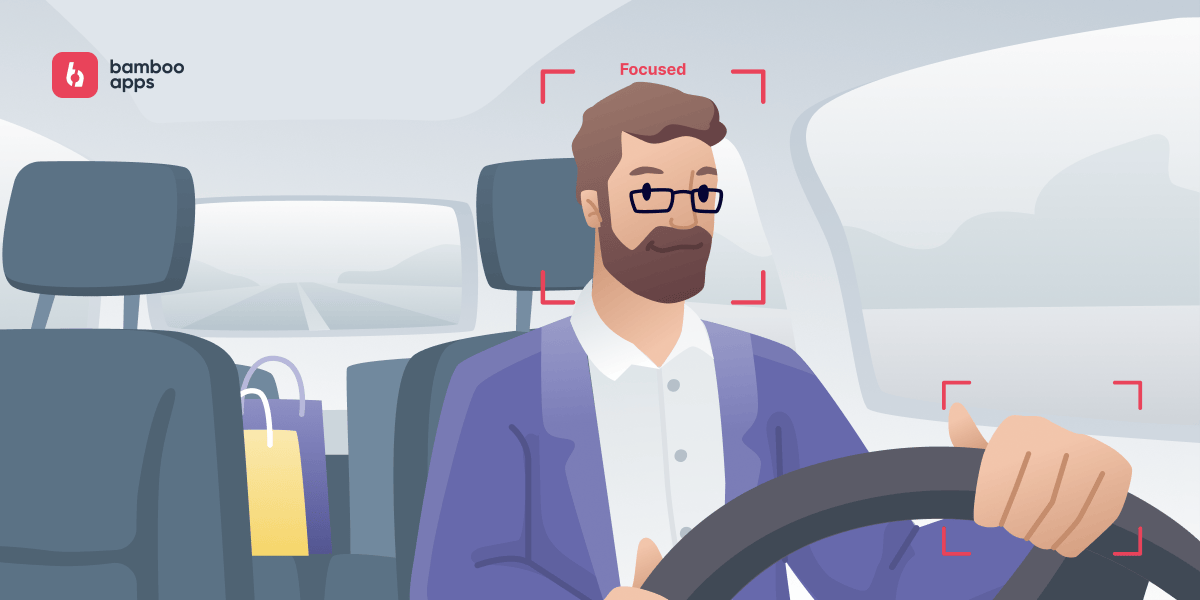- Introduction
- What is a driver monitoring system and how does it work
- Driver monitoring system challenges and regulatory landscape
- Driver monitoring system modules
- Driver monitoring systems algorithms
- Driver monitoring system development trends
- Existing driver monitoring tools
- Main challenges of custom driver monitoring systems development
- Driver scoring app case study
- Future of driver monitoring systems
- Conclusion
Introduction
The WHO report from 2018 showed that a human life is lost in traffic accidents every 24 seconds. Last year’s report showed a fall in the yearly number of traffic deaths. Today, there is one loss per 26,5 seconds. The trend is good, however, there are still 1,19 million traffic deaths per year.
The majority of these accidents are caused by human error, such as distracted or tired drivers. Car manufacturers are now implementing Driver Monitoring Systems to combat this issue. It can identify driver impairment and take the required preventive measures depending on regulations and legislation.
What is a driver monitoring system and how does it work
What is it
A driver monitoring system is a collection of software and hardware elements that monitor driving behaviour and detect potentially risky activities. These systems use cameras and other physical sensors to provide AI algorithms with a range of driving data. This information is then used to figure out whether or not the driver of the vehicle is at risk and to send alerts accordingly.
Most fleet management systems now use basic driver monitoring features. However, driver monitoring devices with advanced AI facial recognition capabilities are only growing more popular. Over the next few years, they will likely become more and more common in fleet management systems and consumer automobiles. European legislation mandated all new cars and light commercial vehicles to have driver monitoring systems installed.
How does it work
A driver monitoring system is built around a driver-facing camera, which can be put straight into a vehicle’s dashboard or function as a dash cam. These cameras use LED lights to capture various facial movements. AI then analyses them to gain a better picture of a driver’s normal, attentive, and safe driving state.
The device then checks variations from this state, which could signal decreased driving abilities. A change in a person’s regular blinking rate, for example, may suggest fatigue. This type of facial data is compared with other parameters. Among these characteristics are the length of the journey and the time of day, which decide whether the driver should take a rest.
Warnings are typically displayed graphically on a control panel or other display, with the symbol of a coffee cup complemented by a sound or even vibration in the steering wheel.
It’s worth noting that this is an example of the advanced driver monitoring technologies created by firms such as Bosch Mobility. The company claims that their algorithm takes into account up to 70 driving signals. Other signs, in addition to blinking, include head tilting, wheel movement, eye constriction, and others.
Driver monitoring system benefits
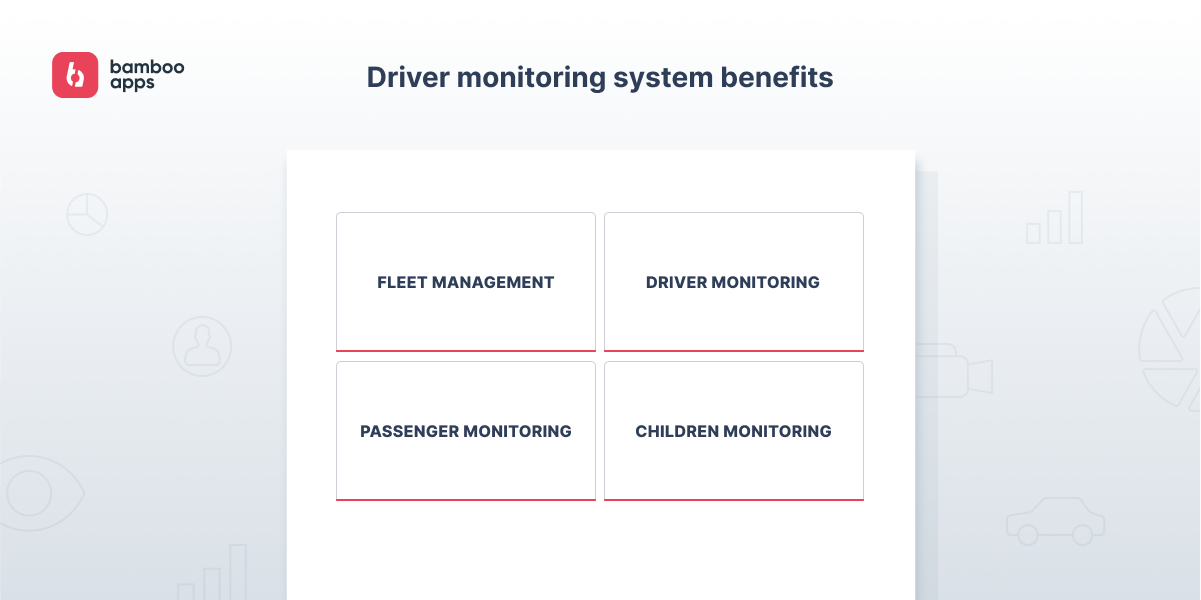
Now let’s look at some undeniable benefits of driver monitoring systems.
Fleet management
Driver monitoring systems provide a wealth of advantages for fleet management that extend beyond simply keeping an eye on drivers.
- Driver monitoring systems lower accident risk by spotting dangerous behaviours. Speeding, hard braking, and driving distractedly are all indicators of this type of behaviour.
- Driver monitoring systems also enable prompt intervention, reducing accidents and saving lives.
- Another benefit is better compliance. It uses real-time monitoring to assist drivers comply with driving hours and speed limitations, lowering legal difficulties and insurance costs.
Driver monitoring technology and systems can improve vehicle and driving efficiency. Identifying inefficient driving habits like idling or harsh acceleration can assist improve fuel use, resulting in significant cost savings.
Smooth and careful driving also means less wear and tear on automobiles. It reduces maintenance expenses and increases vehicle longevity. Real-time tracking of cars and traffic conditions allows for more accurate route planning. This leads to faster deliveries and better on-time performance.
Data-driven insights also enable increased visibility and control, as well as greater communication and lower insurance costs.
Driver monitoring
Driver monitoring enables vehicles to actively monitor the behaviour of drivers and issue timely alerts or suggest actions as needed. This capability produces various positive outcomes:
- Driver monitoring systems can warn drivers and potentially prevent accidents from occurring. It is accomplished by recognising indicators of tiredness, distraction, or other dangerous driving behaviours.
- Driver monitoring systems help ensure that drivers follow company standards and regulatory obligations. This is accomplished by tracking compliance with safety rules such as seatbelt usage and speed restrictions.
- Continuous monitoring helps drivers to stay focused and use safe driving tactics, promoting a safety culture throughout the fleet.
- Data from driver monitoring systems and devices can be utilised to pinpoint particular areas for driver improvement. This data can also be used to provide targeted coaching or training to address specific difficulties.
- Driver monitoring systems can detect and fix wasteful driving habits. It can assist in reducing fuel consumption and wear and tear on vehicles, resulting in cost savings.
- Real-time driver monitoring can help to change routes based on traffic circumstances or driver behaviour, thereby saving time and increasing efficiency.
Passenger monitoring
While driver monitoring systems are primarily concerned with driver safety and comfort, they might also provide unexpected benefits to passengers.
Leaving a pet in a hot vehicle can result in terrible tragedy. Cameras can detect if someone has been left behind and sound an alarm, perhaps preventing the disaster. Passenger monitoring can also assist in locating lost things in a chaotic vehicle, providing passengers with peace of mind while saving valuable time.
For families caring for their elderly, occupant monitoring can provide a sense of security. Remotely monitoring their well-being, ensuring they are belted up, and even detecting signals of distress are all valuable safeguards.
Children monitoring
Driver monitoring systems can serve as cautious guardians for children. Consider cameras that not only monitor the road, but also maintain a silent check on children.
The unfathomable nightmare of abandoning a child is no longer an option. Cameras detect children who are left alone, prompting alarms and alerts to protect them from a heat stroke or danger. Passenger monitoring also identifies the location of dropped teddies and missing crayons, eliminating the need for frantic car seat dives.
Driver monitoring system challenges and regulatory landscape

Challenges
Driver monitoring technologies show great promise for enhancing road safety and fleet management. However, they confront numerous problems that must be overcome before they can be widely used and genuinely alter the way people drive.
Privacy concerns
One of the most significant challenges is privacy. Driver monitoring systems frequently gather sensitive information from drivers, such as facial expressions, eye movements, and even physiological reactions. This raises worries about data security, potential fraud, and a loss of personal privacy. Balancing the benefits of safety with the right to privacy is critical for building public trust and acceptance of driver monitoring systems.
Technology limitations
Current driver monitoring system technology has drawbacks. It might be difficult to accurately evaluate driver behaviour, particularly in complex scenarios. Some variables can make it difficult to recognise tiredness, distraction, or even emotions. Lighting circumstances, face feature variances, and occlusions such as sunglasses are all examples of these factors.
False positives and negatives can sometimes cause issues, such as needless warnings or missed crucial occurrences.
Ethical considerations
The usage of driver monitoring devices has ethical implications. Should employers have access to real-time driver information? How can we assure fairness and prevent prejudice based on driver behaviour? What happens to the data gathered by driver monitoring systems, and who can access it? Setting explicit ethical principles and rules is critical for the proper development and implementation of driver monitoring systems.
Legal and regulatory hurdles
There is currently no clear legal or regulatory framework for driver monitoring systems. This causes uncertainty for factories, fleet operators, and drivers. Standardised legislation governing data privacy, system performance, and liability are critical for ensuring a safe and reliable environment for driver monitoring system adoption.
Cost and Implementation
Driver monitoring system technology can be costly to set up and maintain, particularly in big fleets. Furthermore, integrating driver monitoring systems with current vehicle systems and infrastructure can be a difficult and time-consuming task. Addressing cost issues and simplifying implementation are critical steps towards making driver monitoring systems available to a wider variety of customers.
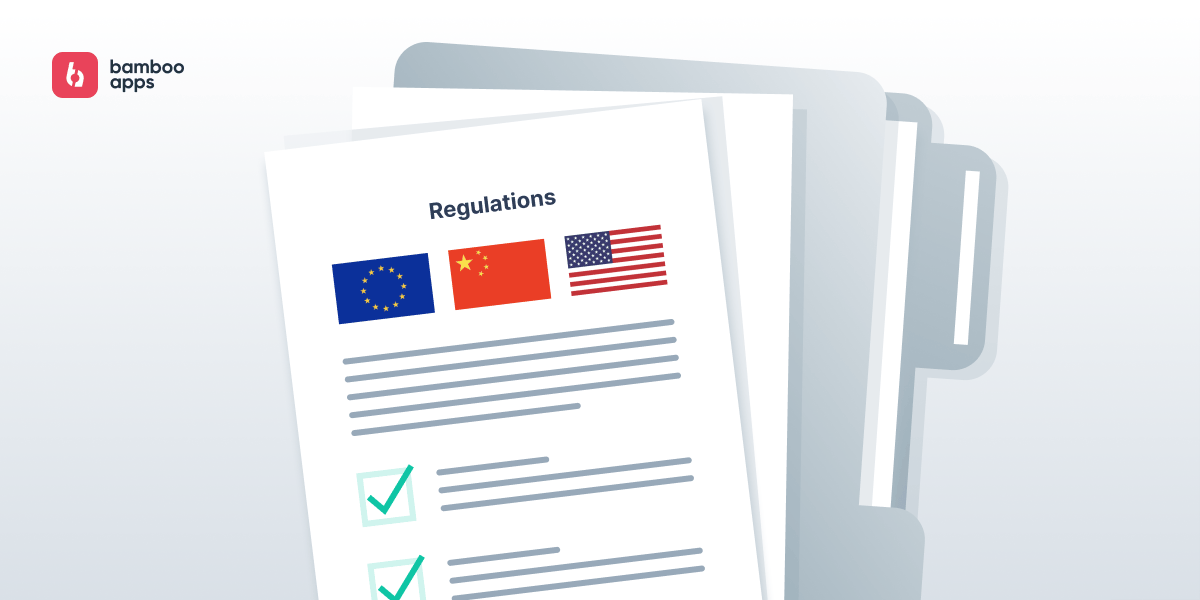
Euro NCAP
The European New Car Assessment Programme (Euro NCAP) is an independent, non-profit organisation that evaluates the safety of new cars marketed in Europe. It performs a series of severe crash tests and assesses other safety measures. This offers consumers objective information on the safety of various car types.
According to Euro NCAP, any new automotive model launched in the European market after January 2023 must include a driver monitoring system. This gives automobile manufacturers throughout the world a renewed sense of urgency to implement driver monitoring systems.
Regulations in China and the US
Jiangsu was the first Chinese province to pass regulations requiring extended distances trucks and vehicles transporting hazardous materials to support driver monitoring in 2018. However, these legislations were only the first step. Notices including other types of cars followed suit.
China has released various guidelines aimed at strengthening product safety management for self-driving capabilities. In 2020, the country implemented performance specifications and testing techniques for driver attentiveness monitoring devices. The tests involve eye closure, yawning, head position, and phone use.
China published the recommended national standard GB/T 41797-2022 titled “Driver Attention Monitoring System (DAMS) Performance Requirements and Test Methods” in October 2020, and it went into force in May 2023. This standard describes five categories of distracted behaviours and the alert conditions that accompany them.
DAMS must involve monitoring for the first three types of behaviour (eye closure, odd head posture, and phone use). If DAMS entails tracking the latter two forms of behaviour (yawning and smoking), it must also fit the criteria.
On July 1, 2020, the US House of Representatives approved the Moving Forward Act, an infrastructure programme focused on improving road safety. One of the Act’s safety requirements demands the integration of technology that detects distracted driving in newly built vehicles.
In April 2021, the Senate introduced the Stay Aware For Everyone (SAFE) Act of 2021. It would be necessary for US authorities to require the installation of driver monitoring systems. This will ensure that drivers are engaged when using semi-autonomous driving systems. If the idea is approved, by 2027, every new car must include some version of the technology.
Now let’s move on to the driver monitoring system modules: what modules are there and what do they do?
Driver monitoring system modules
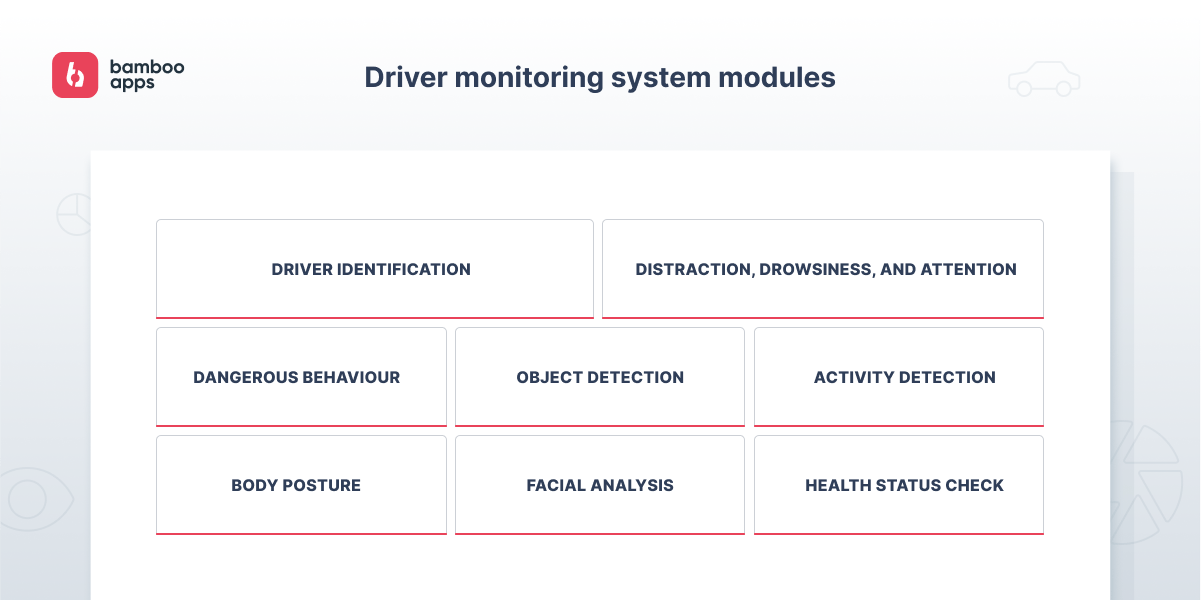
Driver monitoring system technology based on AI offers a variety of tasks to improve road safety and driver convenience.
Driver identification
Driver identification is an important gatekeeper in a driver monitoring system since it ensures that the appropriate person is in control and allows for tailored features.
The system uses facial recognition, fingerprint scanning, and other biometrics, such as iris scanning or voice recognition, to capture the driver’s unique characteristics. The recorded biometric information is checked to a database of approved drivers. If a match is discovered, the system provides access to the car and customises its settings for the identified driver.
Distraction, drowsiness, and attention
The capacity to determine a driver’s mental and alert state is vital to an effective driver monitoring system. Distraction, tiredness, and attention tracking all play a role in keeping a close eye on potential problems.
Here is what they entail:
- Eye tracking, tracking head and body motions, and keeping your hands on the wheel are all distraction-tracking features.
- Drowsiness detecting aspects include droopy eyes and yawns, head nodding and microsleeps, as well as changes in driving conduct.
- Attention monitoring measures facial expressions and microexpressions, blink rate and pupil dilation, as well as reaction time and speed.
Any variations from typical behaviour will be considered harmful by the system. In that situation, the driver will be notified by sound effects, steering wheel vibration, and an alert on the panel.
A great example of this module is GMC’s “Driver Attention Assist” system, which detects distraction and drowsiness and alerts the driver accordingly.
Dangerous behaviour
Driver monitoring systems’ capabilities are continually expanding, beyond simply recording speed and changes in lane. To truly improve vehicle safety, driver monitoring systems now include the detection of behaviours that might considerably distract or impair drivers. It includes eating, drinking, smoking, and using a smartphone.
Cameras and algorithms can detect things taken to the mouth, indicating cases of eating or drinking while driving. Sensors can detect particles of smoke and changes in face expressions linked with smoking. This will result in warnings regarding the dangers of distracted driving. Cameras and touch sensor analysis can also detect phones being handled or used while driving. It is intended to generate visual or audible alerts to dissuade this risky distraction.

In 2022, the Sorax company released its driver monitoring system that can detect smoking and making phone calls, giving the driver a signal when any dangerous behaviour is captured.
Object detection
Driver monitoring systems typically focus on the driver’s actions. At the time, object detection and interior sensing within the vehicle’s cabin were developing as useful additions to improve safety and customisation. It’s like having a pair of attentive eyes on the inside, keeping track of passengers, objects, and potential risks.
Seeing inside the cabin
Infrared or RGB cameras take real-time pictures of the vehicle’s interior. In some circumstances, proximity sensors or lidar can be used in conjunction with cameras to improve spatial awareness.
Identifying objects and passengers
Advanced algorithms scan images to identify and categorise numerous objects and people in the cabin. Commonly detected objects include people, pets and their carriers, bags and luggage, mobile phones, food and beverages, smoking materials, safety concerns (e.g. loose objects), and more.
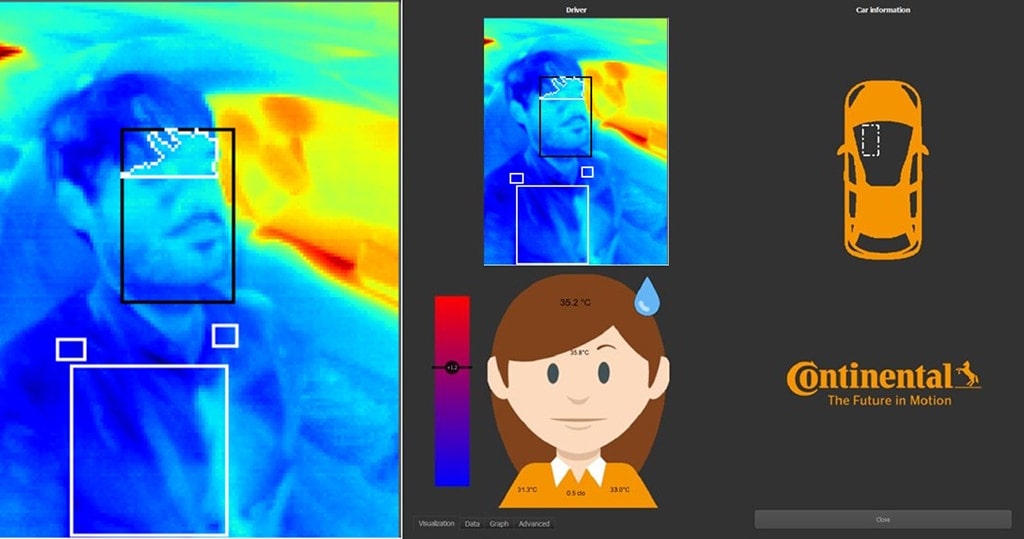
The Continental Engineering Services company offers various solutions that can not only track objects inside the vehicle’s cabin but identify them. The system can also identify the age and various vital signals of passengers, which is particularly useful when driving with children.
Contextual awareness and actions
Driver monitoring systems combine object recognition with additional data points such as driver behaviour, vehicle speed, and ambient variables. It provides a full grasp of the situation. Depending on the identified objects and context, driver monitoring systems can take a variety of actions. These include safety alerts, customised settings, advanced safety features, distracted driving interventions, and fleet management information.
Activity detection
Driver monitoring systems are progressing beyond simply tracking the driver’s eyes and hands. Activity detection, an effective new module, dives deeper, evaluating what’s going on inside the vehicle to improve safety while also personalising the driving experience. Consider a smart vehicle that detects whether you’re grabbing a dropped mobile device, adjusting your posture, or even having a furious argument. This is activity detection in action.
Like object detection, activity recognition uses interior sensing cameras to examine acquired data. Advanced algorithms then interpret the movements, gestures, and interactions.
From subtle head tilts to reaching motions, the system detects activities such as reaching for objects, adjusting posture and seat position, engaging in conversations or arguments, driver drowsiness indicators such as nodding or head resting on hand, smoking or eating while driving, and passenger actions such as unbuckling seat belts or leaving seats.
Body posture
Driver monitoring systems are developing the ability to read the driver’s body language in addition to tracking the driver’s eyes and hands. Body posture analysis appears as an effective new module. It provides additional knowledge into the driver’s state, potentially leading to safer and more comfortable driving experiences.
Cameras capture the driver’s posture from multiple angles, offering a complete picture of body position and movement. Advanced algorithms examine video data to recognise and interpret various positions. These postures include slouching or bending forward, stiff and rigid posture, head nodding or tilting, fidgeting, or excessive movement.
The abovementioned Continental Engineering Services solution offers pose detection as well, helping Level 4 and 5 autonomous vehicles track the driver’s body posture and hand position.
Facial analysis
Driver monitoring systems are moving beyond simply analysing the behaviour. Facial analysis has become an effective new module as well. It reads the driver’s expressions to see if they’re tired or distracted. Cameras capture micro-changes in your face, examine the footage, and help predict potential dangers.
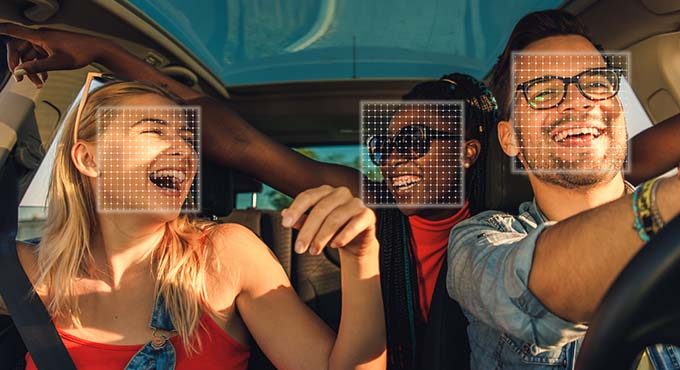
Back in 2017, Affectiva released its Emotion AI application for cars, which can track tiredness, distraction, and create a personalised in-cabin experience.
Health status check
Driver monitoring systems continue to exceed expectations. They are able to not only watch driver behaviour but also to analyse the driver’s general health. This developing “health status check” feature has big potential to improve road safety and driver well-being.
Imagine a system checking your heart rate, oxygen, and even pupil size to predict health risks. It could warn you of fatigue or potential issues, keeping you safe and sound.
For example, the Continental Engineering Services solution checks such vital signs as heart rate (HR), respiration rate (RR), and heart rate variability (HRV).
Driver monitoring systems algorithms
Driver monitoring system algorithms are the driving force behind the technology, processing data from numerous sensors and cameras to assess driver status and behaviour. They play an important part in guaranteeing safety and customised driving experiences.
Computer vision algorithms
Face recognition and identification algorithms watch the driver’s face for signs of tiredness or distraction.
Other algorithms like object detection scan the vehicle for things like phones or water bottles that could grab your attention, while gesture recognition watches your hands to see if you’re fiddling with controls or maybe even using special hand gestures for commands.
This data gets analysed by activity recognition algorithms. They understand what you’re doing (eating, talking, adjusting your seat) and can personalise your driving experience based on it.
However, privacy concerns and potential misuse of this data are important aspects to consider. Ensuring clear regulations and ethical use is crucial for driver monitoring systems to truly make roads safer for everyone.
Signal processing algorithms
Driver monitoring systems have got even more tools to make monitoring more precise:
- Eye tracking detects where you’re looking, catching sneaky glances at your phone or other displays.
- Pupil dilation measures how wide your pupils are, a clue to alertness.
- Voice analysis listens to your words, spotting signs of drowsiness or emotional distress.
- Biometric signals read your heart rate, temperature, heartbeat, to understand driver’s stress and potential health issues.
By combining all this information, driver monitoring systems keep drivers and others safe on the road.
Machine Learning and Artificial Intelligence (AI)
Deep learning enhances algorithms to predict drowsiness and spot unusual behaviour. By analysing driver’s habits and the situation, predictive algorithms can warn drivers about potential issues like fatigue before they become dangerous.
These systems can personalise your driving experience. For example, they tailor driver assistance features, comfort settings, and even infotainment to individual preferences and real-time driving situations.
Driver monitoring system development trends
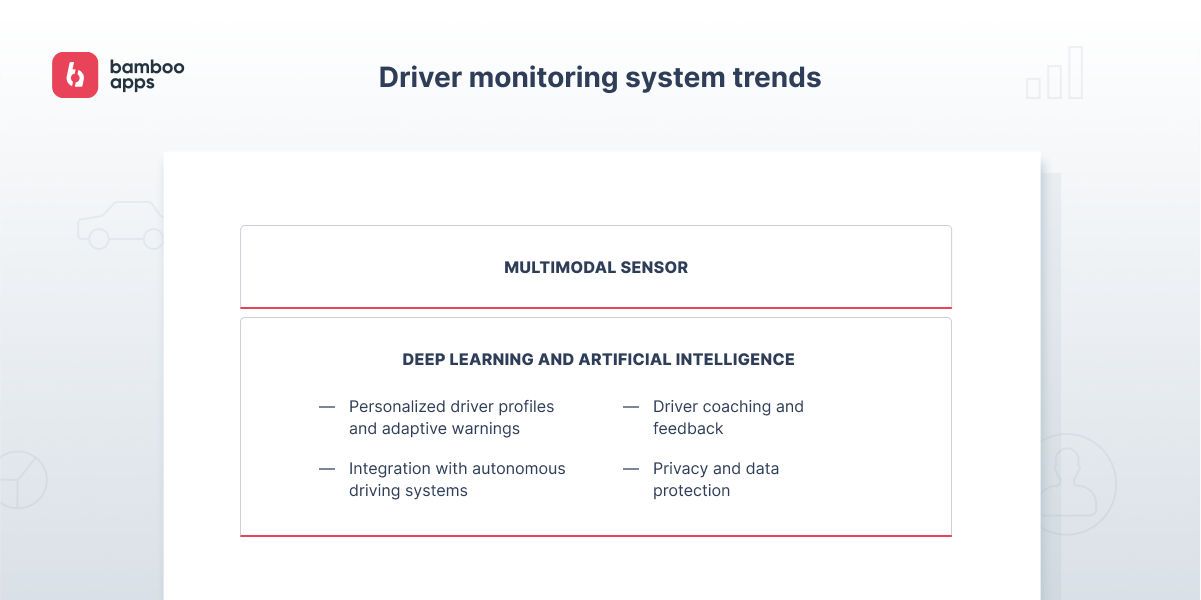
Multimodal sensors
Driver monitoring systems are moving beyond single-modal inputs such as cameras and sensors. The future goes to multimodal sensors.
High-definition cameras capture your expressions, eye flits, and even hand gestures. Other sensors gather heart rate, oxygen, and temperature. They even listen to your voice, catching fatigue or stress. Also, they take note of the cabin, checking temperature, humidity, and light – everything to understand drivers better and keep them safe.
The power of multimodal fusion
Combining information from cameras, sensors, and even the driver’s voice creates a better picture of the driver’s state. This “multimodal” approach reduces false alarms and pinpoints issues better.
Imagine driving with a personal assistant who knows exactly what you need – calming music and cooler air when stressed, fatigue warnings with suggested rest stops. All tailored to each individual driver.
The future of multimodal driver monitoring systems
Multimodal sensors are constantly evolving. In the future, they will become more precise in prediction of fatigue before it kicks in, suggesting rest stops, and acting as your onboard health monitor.
By addressing privacy concerns and ensuring ethical development, this technology can revolutionise how we drive.
Deep Learning and Artificial Intelligence
Deep learning and AI are transforming driver monitoring, creating safer, personalised journeys.
Personalised driver profiles and adaptive warnings
The future of driver monitoring systems powered by deep learning and AI revolves around personalisation. Imagine if the vehicle remembered your habits and feelings, like a personal driving coach. This is the future of driver monitoring, thanks to AI and deep learning.
Generic alerts can be replaced with warnings based on how the driver’s acts and feels. The vehicle might also suggest a rest stop. It might adjust the temperature automatically or play fitting music.
Adaptive warnings can be used in several ways:
- The system issues warnings and interventions based on real-time data such as traffic congestion, weather, and emotional state.
- Instead of a single beep, the system may progressively increase the warning strength as fatigue rises, offering a clear and timely intervention.
- Imagine the system becoming more sensitive to phone use while driving in heavy traffic or reacting to passenger interactions.
Integration with autonomous driving systems
The future of driving is changing as deep learning and AI enable the merging of driver monitoring systems with autonomous driving systems.
During the transition from manual to autonomous driving, driver monitoring systems can detect driver distraction or exhaustion. It can avoid unsafe circumstances by delaying automation or suggesting breaks. If the autonomous driving system comes into an unforeseen circumstance, the driver monitoring system can assess the driver’s awareness and readiness to resume control, providing timely prompts and help.
By analysing the driver’s preferences and fatigue levels, the autonomous driving system can change the driving style and automation levels, resulting in a more comfortable and customised experience. Data from driver monitoring systems on real-world driver behaviour and reactions can be utilised to fine-tune and improve the algorithms that run the autonomous driving system.
The integrated technology reliably assesses driver attention, tiredness, and even emotional states. Deep learning algorithms are used to analyse data from cameras, biosensors, and voice analysis.
By anticipating potential dangers based on the driver’s state and driving environment, the system can issue timely warnings, change automation levels, or even activate safety features such as emergency braking.
Driver coaching and feedback
Deep learning and AI-powered driver monitoring systems are growing beyond simple alerts. The future is in driver coaching and feedback. It’s a game-changing trend in which the car becomes a personal driving instructor. It provides insights and ideas for improving skills and behaviours.
Deep learning algorithms examine driving data, which includes moves and actions, environmental conditions, and driver states.
Drivers can get positive comments on their braking distance in heavy traffic or a friendly reminder to prevent excessive phone use. The system tailors its suggestions to individual scenarios and driving habits. Additionally, drivers can analyse their progress over time, discover areas for development, and celebrate their accomplishments. The system becomes a driving companion, tracking the progress towards safer and more confident driving.
For businesses with vehicle fleets, driver monitoring systems can provide useful insights into driver behaviour and highlight areas for targeted training or coaching. This can increase fleet safety and efficiency.
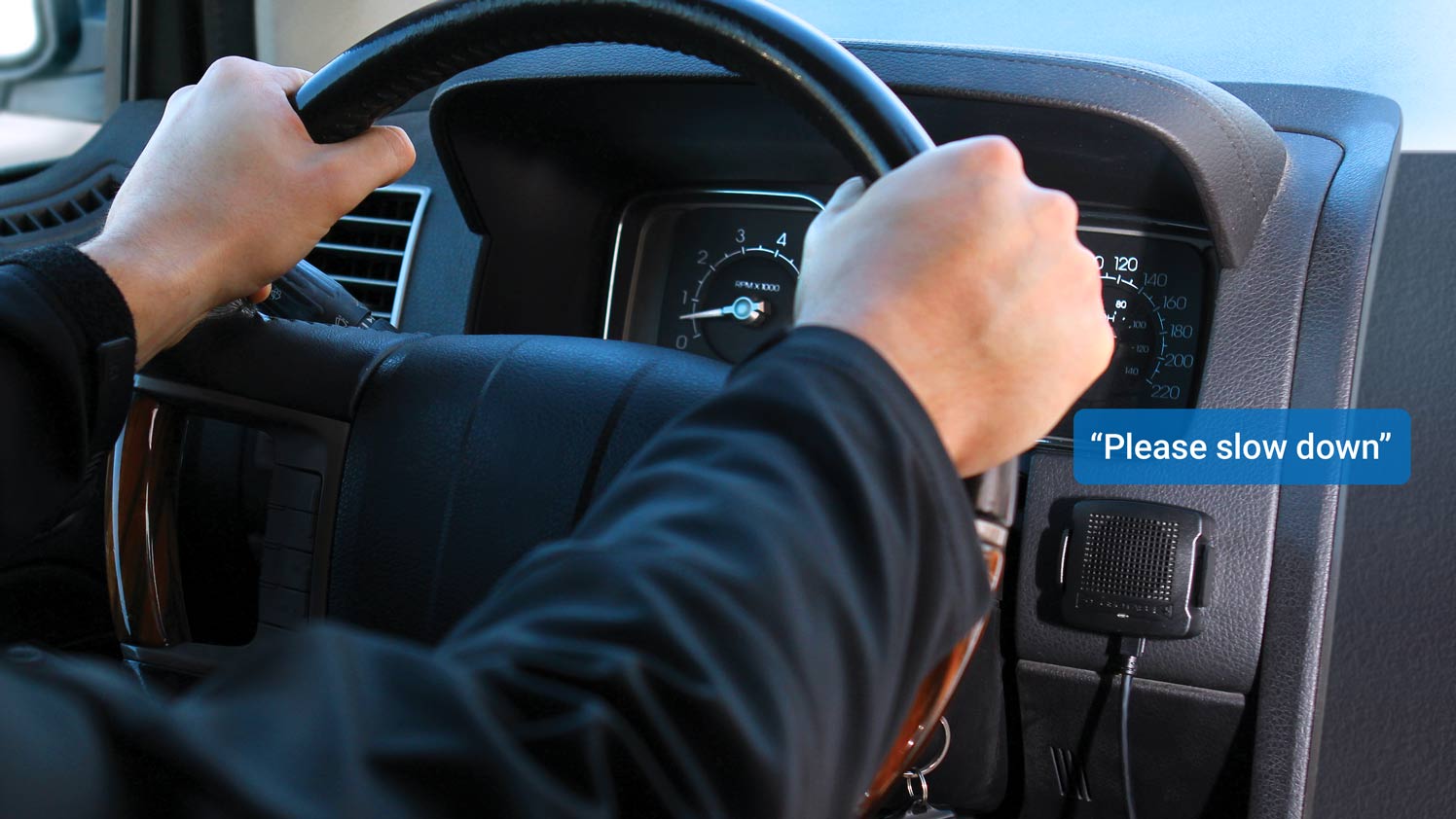
As an example of driver coaching feature implementation, we can mention Geotab’s solution, which can track risky driving, send notifications about that, provide feedback for drivers, and more.
Privacy and data protection
As driver monitoring systems based on deep learning and AI improve, so do worries about privacy and data security. This trend has enormous potential for tailored experiences and safer driving, but navigating the ethical and legal minefield is critical.
It is unsurprising that some concerns arise. The large amount of personal information acquired by driver monitoring systems raises worries. They concern identity theft, profiling, and potential exploitation by other parties. Users require a thorough awareness of the data collected, how it is used, and who has access to it. Control over data sharing and deletion is critical. Deep learning algorithms may be prone to biases in training data. It can lead to unethical or discriminatory coaching and interventions.
However, driver monitoring system makers can take several steps to protect data security and privacy. To safeguard personal data from unauthorised access or breaches, strong security measures such as encryption, anonymisation, and access limits must be implemented. Clear and easily understandable policies outlining data collection, usage, and sharing procedures are critical for establishing user confidence.
Giving consumers genuine control over their data, such as the choice to opt out of data gathering or specific services, empowers them and builds confidence. Furthermore, incorporating ethical values such as justice, accountability, and transparency into AI research promotes responsible data use and reduces potential biases.
Existing driver monitoring tools
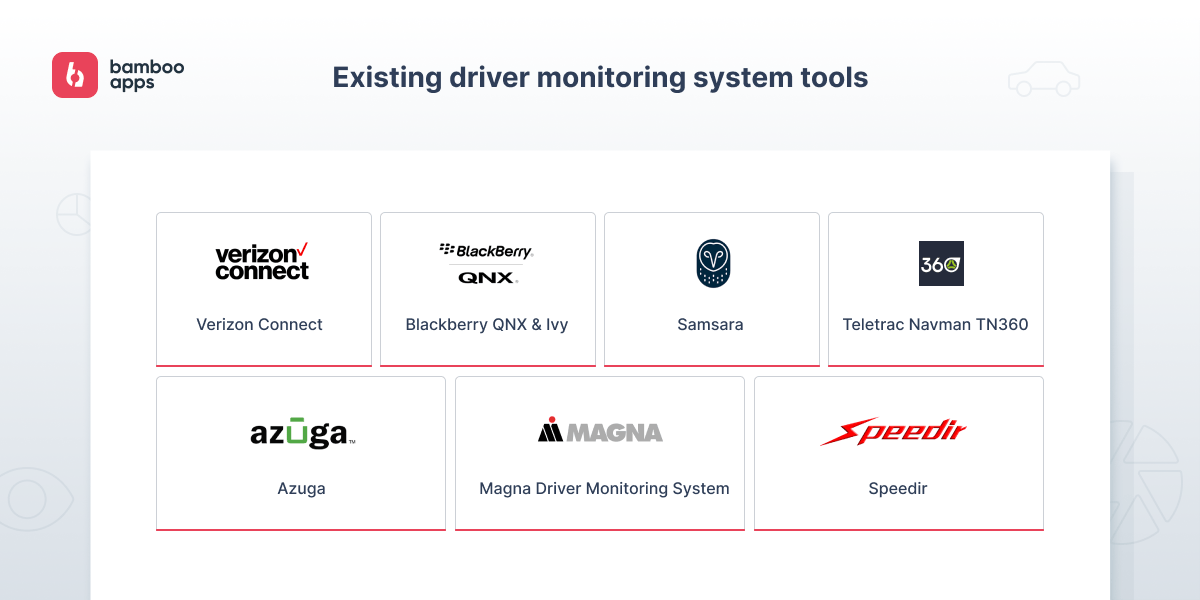
Now let’s look at some existing driver monitoring systems that are successfully operating on the market.
Verizon Connect

Verizon Connect delivers if you want to keep track of safety, compliance, or productivity in an effective, digital manner. This software system aids in the management of a fleet’s vehicles, drivers, jobs, and assets.
The user interface provides insights into fleet statistics to assist users in making more educated decisions. For instance, it can reduce idle and wasteful fuel use to save money or improve productivity by boosting the visibility of fleet operations. It also features AI-powered dash cams, which can improve safety, minimise accidents, and deflect bogus claims.
Blackberry QNX & Ivy

BlackBerry QNX solutions enable automakers and Tier 1 suppliers to create and develop high-performance, safe, secure, and reliable software for existing ECUs as well as next-generation ECUs and domain controllers.
BlackBerry IVY is an in-vehicle and cloud-connected software solution meant to help software developers build and deploy data-driven middleware applications in vehicles more easily. BlackBerry IVY encapsulates car signals and allows developers to process them using code, including Machine Learning.
It provides data connectivity reductions, decreased development times, and enhanced agility for car manufacturers and automotive software developers without requiring a substantial upfront software investment.
Samsara

Samsara is a fleet operations management platform approved by the FMCSA. It provides capabilities such as GPS fleet monitoring, ELD compliance, routing and dispatch, documentation, reporting and alerts, and more to help various businesses streamline fleet operations. Live GPS monitoring reveals where vehicles are at the moment, allowing users to provide clients with accurate ETAs.
Users can also design more efficient routes with reporting tools and protect their business and assets with integrated dash cams, driver safety ratings, and automatic notifications for speeding, idling, and geofences.
Teletrac Navman TN360

The Teletrac Navman TN360 has a safety analytics module that makes use of an AI-powered dash cam to deliver driver safety alerts, predictive feedback, and statistics for acceleration, cornering, and forceful braking. The data is fed into a points system and displayed on leaderboards, allowing drivers and managers to easily monitor performance.
Azuga

Azuga’s AI Dashcam claims to detect an extensive number of risky driving behaviours, such as yawning, which is an indication of inattentive and sleepy driving. It integrates with Azuga’s fleet management app to provide an additional fully-featured fleet tracking solution. Another key sales point of its safety features is the seat belt alert, which is unique among its competitors.
Magna Driver Monitoring System
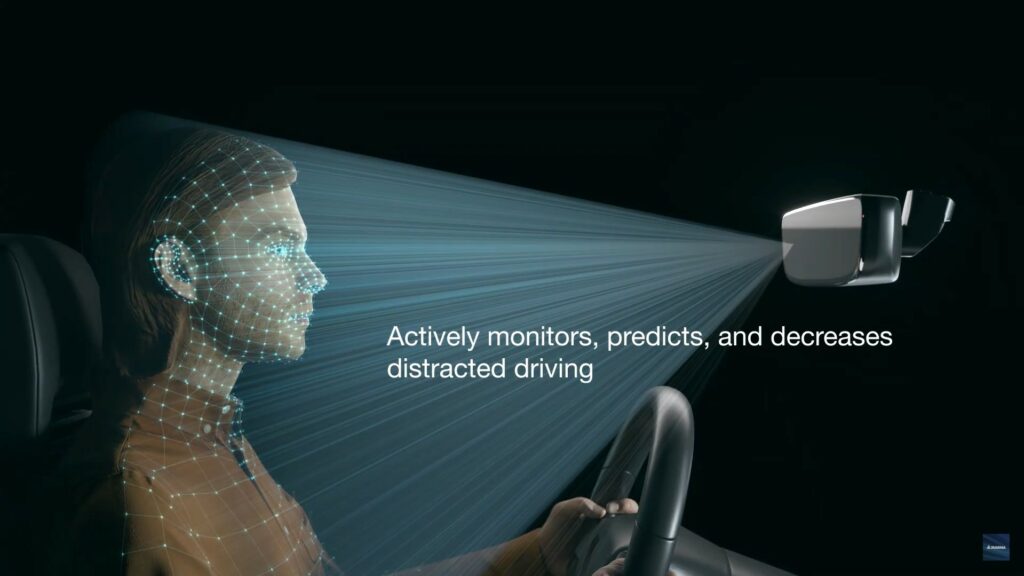
The Driver Monitoring System from Magna identifies distracted driving, drowsiness, and exhaustion. It takes advantage of Magna’s expertise in ADAS cameras and interior mirrors to provide a unified product that lowers distracted driving and saves lives.
The driver monitoring system is integrated into the rearview mirror. To detect inattentive or drowsy driving, the system analyses the driver’s head, eyes, and body. The camera-based system also employs infrared sensors, which allow it to forecast when a driver is not paying attention and give an alert via a vehicle’s auditory or visual signals.
Speedir
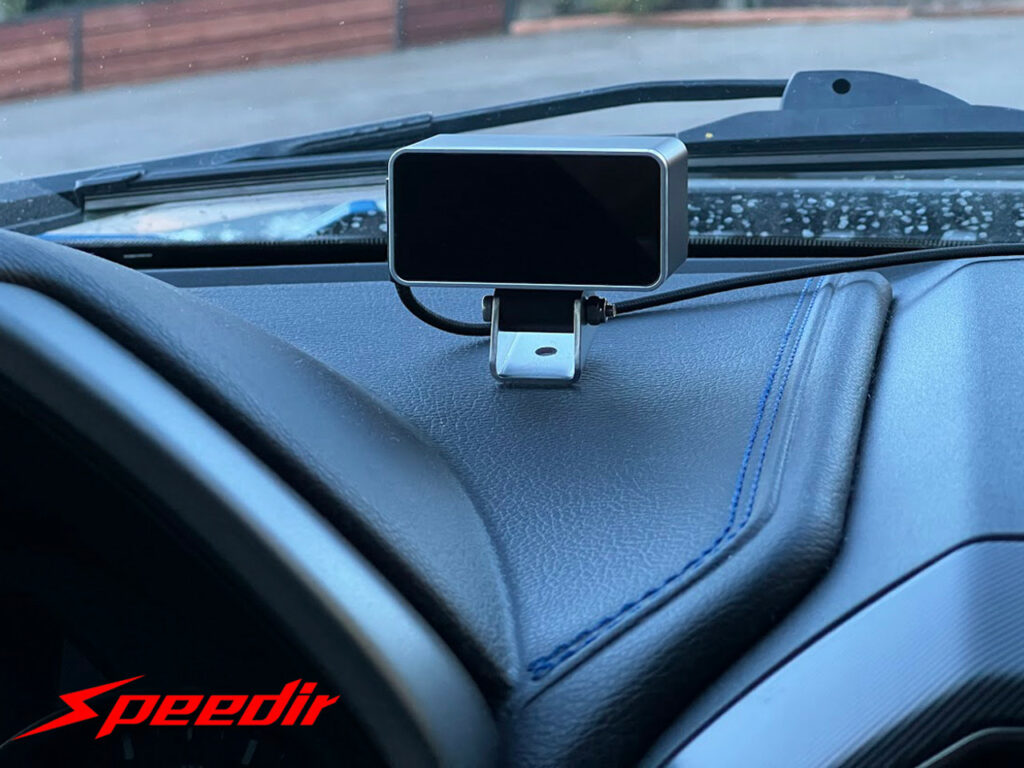
Speedir’s AI dash cam is one of the only commercially accessible solutions that promises advanced capabilities like eyeball monitoring to help diagnose drowsy driving, giving us a taste of the full capability and future of driving monitoring technologies. Unfortunately, this application does not appear to link with common fleet management platforms and must be used as a standalone tool.
Main challenges of custom driver monitoring systems development
Custom driver monitoring system development offers fascinating prospects, but it also poses significant problems. Here are some major challenges to consider
Technical challenges
Integrating and synchronising data from many sensors such as cameras, microphones, and biometrics necessitates advanced algorithms and hardware setups. Maintaining data accuracy and consistency across multiple sensors can be difficult.
Building robust and accurate AI models needs a large amount of data and skill in deep learning approaches. Furthermore, implementing safe data storage, anonymisation techniques, and user control mechanisms requires considerable thought.
Another problem is the complexity of integrating driver monitoring systems with current vehicle systems, as well as guaranteeing adequate calibration for various vehicle models and situations.
Moreover, creating and implementing a unique driver monitoring system can be costly, necessitating specialist hardware, software development knowledge, and ongoing maintenance.
Other challenges
Existing commercial driver monitoring system solutions from reputable companies such as Bosch, Continental, and Mobileye provide significant competition for custom systems. Not only that, but collecting and annotating enormous volumes of real-world driving data to train AI models may be time-consuming and costly.
Before deploying a unique driver monitoring system, you must ensure its accuracy, dependability, and safety through rigorous testing and validation in a variety of driving scenarios. This will unavoidably push your release dates forward, giving competitors more time to adapt and change.
Despite this, custom driver monitoring system development has enormous potential for enterprises and organisations looking for personalised solutions to specific demands or niche applications. Many people can benefit from custom driver monitoring systems, which can make driving safer and more personal. It is possible by carefully assessing the technical, regulatory, and ethical issues associated with the technology and adopting solutions to address them.
Driver scoring app case study

Bamboo Apps has a driver behaviour and analysis application prototype in its portfolio.
Designed to simplify performance estimation and stimulate improvement, the app evaluates driver performance based on a variety of parameters, including speeding, braking, phone use, swerving, cornering, and jerking. It accomplishes this by monitoring one’s driving behaviour and logging important incidents along the journey.
Individual drivers and entire driving teams are scored based on the outcomes of their finished rides. The prototype also has gamification aspects, chats, scheduling, and tracking features. The key elements of the application are the user profile, journeys, ranking and rewards, driving tips, the EV scan, social media blocking, accident management, messaging, and notifications.
Future of driver monitoring systems
For several years already, drivers have been using driving monitoring systems to improve road safety. It is expected that this technology will advance even more in the coming decade.
AI and machine learning algorithms are expected to play a significant role in the development of driver monitoring system technology. AI systems will examine the driver’s behaviour patterns and activities to detect weariness or a lack of concentration. When the system identifies this, it instructs the driver to take a break or refocus their attention.
It is also expected that driver monitoring system technologies would improve the driving experience. Personalised music or audiobook recommendations may be provided depending on the driver’s emotions or behaviour, for example through the vehicle’s infotainment system. Depending on the driver’s preferences, the system may also suggest rest stops or local attractions.
The incorporation of biometric sensors is a promising step. To detect signs of stress or weariness, biometric sensors will monitor a driver’s heart rate and blood pressure. Based on this information, it will recommend relaxing music and adjust the temperature in the vehicle. This will help the driver relax or stay focused.
Expert opinion
We’ve asked Anatoly Spirkov, the CEO of Bamboo Apps, to share his thoughts about driver monitoring systems and the future of this technology. Here are his thoughts on the topic.

As we progress towards Level 4 and Level 5 of Autonomous Driving Assistance Systems (ADAS), it’s anticipated that Driver Monitoring Systems will undergo significant transformations.
Certain existing features of driver monitoring systems are likely to become obsolete. For instance, as vehicles reach Level 5 autonomy and eliminate the need for a steering wheel, the necessity for driver notifications about fatigue levels, lane-keeping assistance, and similar functions will diminish. This is because the responsibility for driving will fully transition to the vehicle’s autopilot system.
Concurrently, data derived from monitoring the driver’s facial expressions and other physiological signals might be repurposed for marketing objectives and utilised within the vehicle’s infotainment systems. Once the vehicle eliminates the need for a physical driver and steering wheel, its primary function could shift to entertaining the passengers through advanced infotainment systems.
In terms of AI, it may not only replace traditional driver attention monitors but also provide detailed instructions and notifications tailored to the vehicle’s operational status and the passenger’s profile. This evolution signifies a major shift from active driver engagement to enhancing the passenger experience in fully autonomous vehicles.
Conclusion
As you can see, driver monitoring systems are becoming an integral part of vehicles and their owners. It’s just a matter of time before this technology will be implemented into every vehicle and become commonplace, like infotainment systems or air conditioning.
You’re probably wondering how to develop your own driver monitoring system or some other kind of automotive software. The easiest way is to outsource the development process to a company that has extensive experience in automotive software development services.
Bamboo Apps is the perfect example of an experienced vendor, trusted by world-class brands such as Jaguar Land Rover, Mitsubishi Electric, Škoda, and many more. Fill out our contact form to get a consultation from our specialists about your idea. Transform your dream project into reality!
